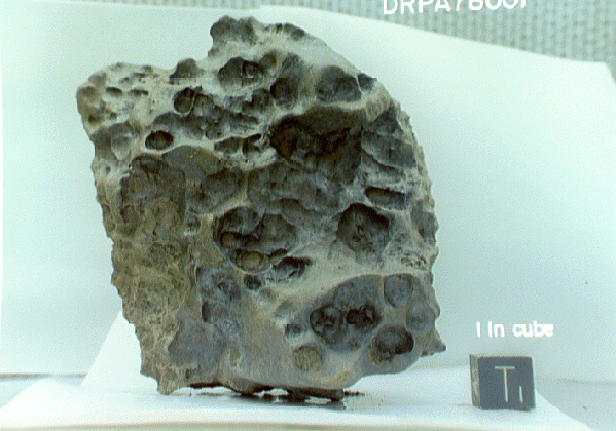
Caption: An iron meteorite from Derrick Peak, Antarctica.
Iron meteorite (irons) are primarily iron (Fe) and nickel (Ni).
Irons are probably remnants of the broken-up cores of chemically differentiated asteroids.
Irons constitute ∼ 66 % of meteorite finds: i.e., meteorites just found on the ground without being seen to fall.
But they are only ∼ 6 % of meteorite falls: i.e., meteorites that are seen to fall and then are located. Most meteorite falls are stony meteorites or stony-iron meteorites.
-
Question: Why are
irons so much more abundant as
meteorite finds than as
meteorite falls?
- Just by chance.
- stony meteorites and stony-iron meteorites look pretty much like terrestrial stones, and so do NOT catch the eye. Irons look weird.
Answer 2 is right.
Given the 66 % to 6 % ratio, most meteorite finds are irons by more than chance alone.
Also irons are pretty resistant to burning up in the atmosphere, and so the large abundance that we find on Earth is probably a biased sample of meteoroids.
Iron meteroids are probably a small fraction of meteoroids.
Credit/Permission: NASA,
JPL,
before or circa
2005 /
Public domain.
Download site: Views of
the Solar System: Meteorites.
Image link: Itself.
Local file: local link: meteorite_iron.html.
File: Solar System file:
meteorite_iron.html.